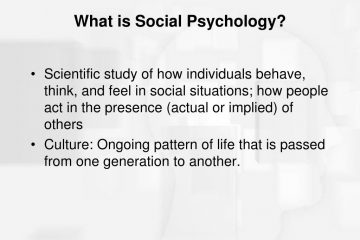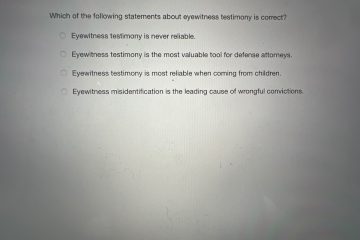How did some urban housing reforms of the late nineteenth century eventually add to urban blight?
Gudwriter is the leading provider of quality essay writing services. Our work is completely unique hence plagiarism free. Our experienced writers follow all the guidelines provided throughout the writing process without making any assumptions.
Elevate Your Writing with Our Free Writing Tools!
Did you know that we provide a free essay and speech generator, plagiarism checker, summarizer, paraphraser, and other writing tools for free?
Access Free Writing ToolsHow did some urban housing reforms of the late nineteenth century eventually add to urban blight?
For America, the nineteenth century was a trying time, for it was a nation struggling to maintain itself through another World War and a Great Depression. In the nineteenth century, urban development consisted of “slum houses” that were often poorly constructed and hosted many public hazards, which led to a rapid increase in mortality rates (Urban Redevelopment, 2003). A change was needed. The urban reform movement started to take shape, starting with the establishment of the New York State Tenement House Law, which called for strict zoning ordinances. These zoning regulations were intended to separate the public from any public hazards industrial corporations (Urban Redevelopment). The program had great intensions, but it ultimately created many more problems due to the lack of control. For example, racial discrimination was rampant in organization, which caused many of the housing sections to be racially segregated. In addition, inadequate tax policies failed to keep the quality of these housing divisions in good standing. They hardly had enough funds to build proper schools, roads, and other various public services (Urban Redevelopment).
Once World War II came to an end, urban developers came together to plan a reform for the urban cities. The first steps of the reform were regulations established in the Housing Act of 1949: Urban Renewal Program, which called for demolition of all major slums and replace them with reconstructed housing at a fraction of the cost (Urban Redevelopment). Through the practice of eminent domain, the land was seized by the government, cleared and then auctioned off to the local developers. These local developers were not bound by the restrictions of the Housing Acts, and had no intensions of providing adequate support to the poor. Essentially, the urban reform programs allowed developers to reconstruct housing under the presumptive assumption of aiding the low-income residents; however, this was not the case. Cities were divided with the wealthy on one end, and the poor on the other; and the reform programs caused millions of poor families to relocate for the developmental needs of the wealthy. The intentions of the program were initially good; however the process was greatly flawed causing the blight of the urban housing.
Reference
“Urban Redevelopment.” Dictionary of American History. 2003. Retrieved December 23, 2015 from Encyclopedia.com: http://www.encyclopedia.com/doc/1G2-3401804366.html
Scheme through to know more about the rental housing agreements.
Evaluate the strengths and weaknesses of progressivism
The 20th century was a time of great reform. Many of the urban reform programs opened the eyes of the nation to more urgent matters that needed direct attention. America in the 1900’s looked the same, but faced even more complex problems. Old strategies needed to be replaced by progressive reform. This ideology lead to the creation of the Progressive Party in 1912 (US History, 2015). The Progressive Party was comprised of “urban, Northeast, educated, middle-class, Protestant reform-minded men and women” (US History), that applied all their means to changing the nation’s problems in respects to social standards.
There were many Presidents that supported such ideologies as provided additional means for the continuation of the progressivism, such as the following: President Theodore Roosevelt, William Howard Taft, both members of the Republican Party; and Woodrow Wilson who was a member of the Democratic Party. This goes to show that one of the greatest strengths of progressivism was its diverse applications; it was a social movement rather than a political designation (US History). What made progressivism so attractive was the its concepts of reform could be applied to all aspects of society; ranging from but not limited to conservation of natural resources to women’s suffrage (US History). Progressivism was able to establish the creation of many state regulations, to include, four of the amendments within the American Constitution. Progressivism was a powerful tool, but it had a grave weakness. Progressivism was utterly useless if the proper attention was not applied to the concepts. This is why the movement failed after the country devoted its attention World War I (US History). Without the proper facilitation, progressivism could not function on its own. But the efforts left a remarkable tinge on the minds of the nation; setting the foundation for a more active government in the near future.
Reference
US History. (2015). Progressivism Sweeps the Nation. Retrieved from http://www.ushistory.org/us/42.asp
Many historians feel that Harry Truman as much as Joe McCarthy gave force to the postwar “Red Scare.” Explain why you agree or disagree
According to our textbook, the “Red Scare” was significantly inspired by the fear that communism would take over industrialized America (Henretta, Edwards, Self, 2012. Pg. 664). It has been suggested, the First World War reigned in the “era of differences’—racial differences, social status, and economical status; this was largely due to mass migration of various immigrants to America for economic opportunities; and many of those immigrants were from European countries (Henretta, Edwards, Self). Basically, American citizens feared that many Communists and Socialists from Europe infiltrated the United States under the shield of immigration laws, in order to spread their radical ideologies on American soil. These radical groups were known as “anarchists” in which many of them were actually American citizens who sympathized with the Communists views (Henretta, Edwards, Self). There were many American citizens who opposed the war against the Soviets and opposed the United States’ liberal political views. The same political fears were presented at the end of World War II and the beginning of the Cold War.
As World War II ended, the Soviet Union made several moves to ensure that Germany and other various Eastern European nations were under their umbrella of control; however, their abrasive influence of communism among these nations, known as the “Iron Curtain”, was a growing concern for the United States (Henretta, Self, 2012). The 45 year struggle between the United States and the Soviet Union was born, and named the “Cold War”. The root of the problem was the fear of the expansion of communism; and the longevity of the war was due to the militarism from World War I. The Union had the same military advantages as the United States; however, the United States deferred any serious actions by provided aid, under the Truman Doctrine, to those nations avoiding suppression (Henretta, Self, 2012).
Many peopled believed that President Truman was a harsh man that established foreign policies that would leave deep scares on the nation. He was a man of deep rooted principles that often made his political decisions seem threatening. He was an active supporter of McCarthyism and applied his best efforts to restrict the spread of communism. His aggressive approach made is seem as though he gave force to the “Red Scare”, for he knew many effective results were established through fear. This fear led to the Cold War, in which both nations were at stalemate for action. The reality was President Truman used the fear developed in the “Red Scare” as propaganda to persecute those who opposed any American political views and promote active support in the efforts of the Cold War.
Reference
Henretta, A., J., Edwards, Rebecca, Self, O., R. (01/2012). America: A Concise History, Volume Two: Since 1865, 5th Edition. [VitalSource Bookshelf Online]. Retrieved from http://bookshelf.vitalsource.com/#/books/9781457664427/
Describe the Supreme Court’s decision in Roe v. Wade; then defend or criticize it
In Roe v. Wade (1973), the Supreme Court ruling was a matter of great controversy; a debate that continues today. The legal elements of practicing abortion in various states is matter of control versus privacy. After great deliberation, the Supreme Court ruled that a pregnant woman has “a fundamental privacy right to obtain an abortion”, so long as it is within the first trimester (Henretta, Self, 2012). In legal terms, the Court stated that the unborn child has not reach a viable state until the second trimester; here the abortion procedures can be regulated by the state based on preserving the health of the mother. Essentially, the elements of Roe v. Wade is a matter of personal privacy; a legal right to choose what is in the best interest of the mother rather than the unborn child (Henretta).
The restrictions and the “trimester framework” are all viable concepts of the ruling. They offer a means of relief in various circumstances. For example, if a lady was rapped and became with child, she had a legal right to seek an abortion based on her mental and physical health risks. The child would cause more harm to the mother both physical and emotionally, and would more the mother would pass her resentment to the child, cause that child harm as they grow up. To avoid such abuse on both parties, abortion is a likely option. However, if a young lady become pregnant as a direct result of her own actions; she should be governed by the restrictions of the law. However, I am also inclined to agree that all women have the right to choose within the first trimester, regardless of the circumstances behind their pregnancy. Allowing the government to step in and regulate the birth of a child, is over stepping its political boundaries.
References
Henretta, A., J., Edwards, Rebecca, Self, O., R. (01/2012). America: A Concise History, Volume Two: Since 1865, 5th Edition. [VitalSource Bookshelf Online]. Retrieved from http://bookshelf.vitalsource.com/#/books/9781457664427/

Special offer! Get 20% discount on your first order. Promo code: SAVE20


